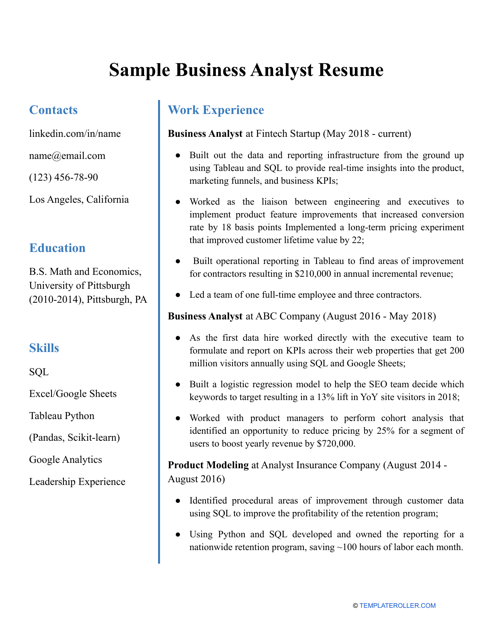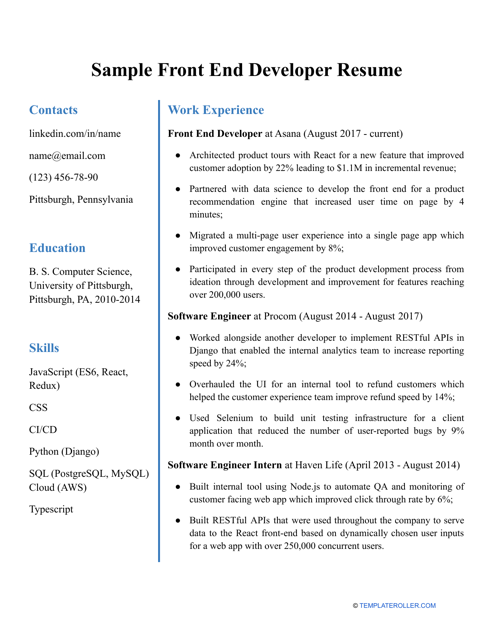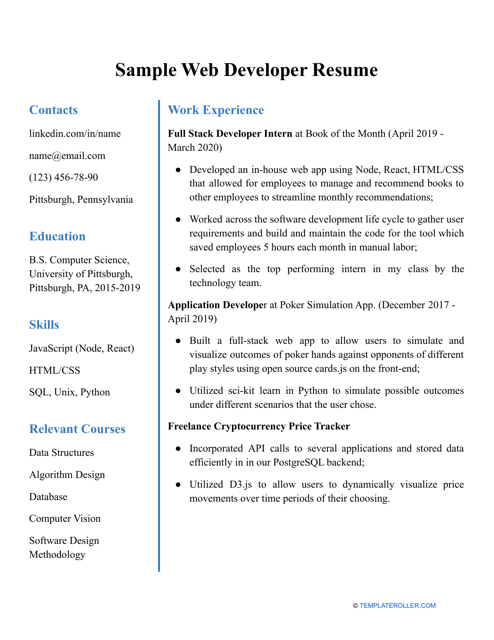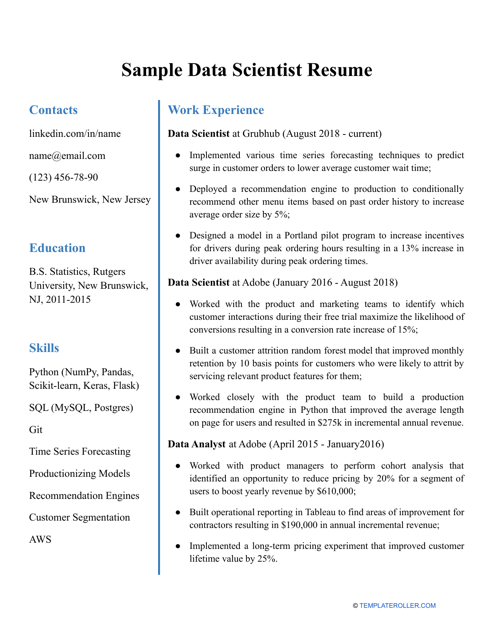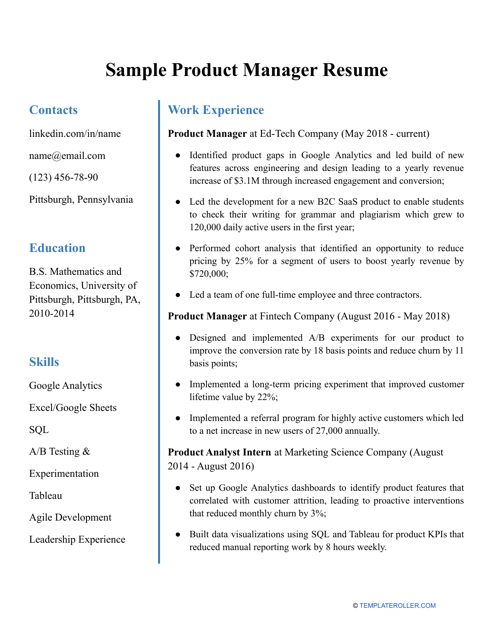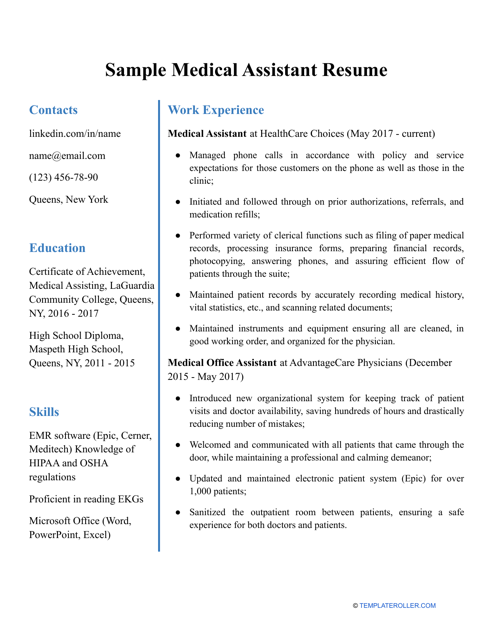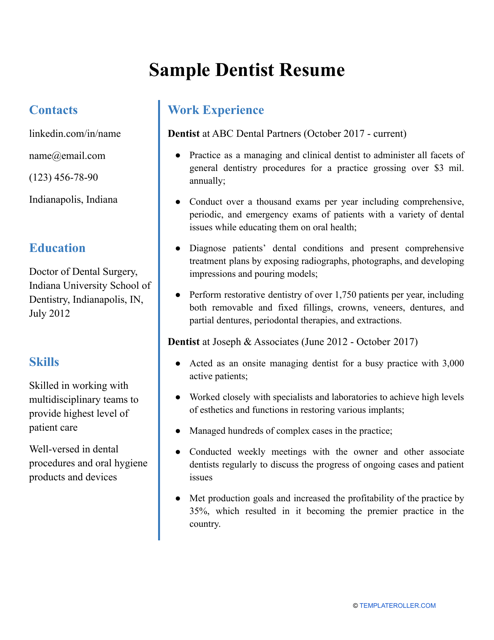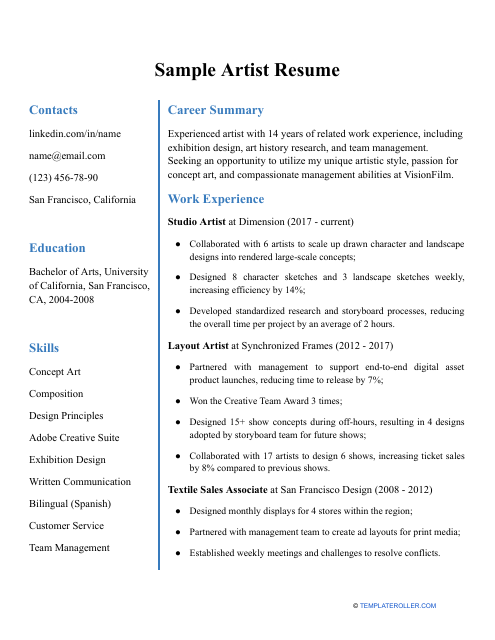Free Resume Templates
What Is a Resume?
A Resume is the main document that a candidate uses when they want to apply for a job. The purpose of the document is to provide a prospective employer with an extensive amount of information about the candidate’s work experience, personal qualities, professional skills, etc. Even though the primary use of a resume is for a job application, it can also be used to apply for a volunteering, educational, or any other kind of program which requires a certain type of information to be provided by a candidate.
A job resume is the best way to demonstrate to a potential employer all of the professional achievements a candidate has. Usually, candidates use this document to show their strongest sides that can help them get the job they have applied for.
There are different types of resumes. Depending on the position a candidate is applying for, they can choose to use a resume that is:
- Chronological. The most commonly used resume format, where the focus is put on a candidate’s work experience and it is presented in chronological order;
- Functional. A functional resume focuses on a candidate’s skills and experiences, avoiding chronological work history;
- Combination. As it is clear from the title, this type of resume combines the main features of the types stated above. It is a flexible kind of document, where information about a candidate’s skills is followed by their chronological work history;
- Targeted. In this case, the resume targets the job offer and mirrors the job requirements. In other words, everything stated in the resume is customized and specific to the position the candidate in question wants.
For a full list of Resume templates please check out our library below.
Resume Vs. CV
A resume is not the only document that can be used to apply for a job, some candidates prefer to use a CV (Curriculum Vitae). Many people consider resumes and CVs the same thing since they are used for the same purpose, however, these documents have some specific differences and they are not always interchangeable. Specialists distinguish several particular aspects which include the following:
- Length. By a general rule, CVs tend to be lengthy since they thoroughly describe the candidate’s academic background, and activities such as researching, teaching, publications, grants, and other things that the candidate has taken part in;
- Content. While resumes are focused on the competence of a candidate, designating their skills, work achievements, and job experience, the CV’s primary focus is on a candidate’s credentials and providing information about their education, research experience, etc.;
- Use. CVs are used when a candidate is looking for a job in a medical, academic, or scientific field, while resumes are more likely to be used when a candidate is looking for a job in marketing, accounting, or a managing field.
How to Write a Resume?
Writing a resume can be a time-consuming process, since whether the candidate will get the job not only depends on a candidate's skills but on how they have described them in their resume as well. A well-written resume should follow a certain structure and can include parts, such as:
- Resume Objective. A candidate can start their resume with a statement where they can express why they are seeking employment and state their career goals.
- Personal Information. Here a candidate should enter their name, contact information, and any other data that they would like their potential employer to know about them.
- Work Experience and References. In this part of the document, a candidate should describe their work experience mentioning all of the important aspects of it. They can also include a reference list here.
- Education and Qualifications. Candidates use this section of the resume to designate information about their education and any other courses they have taken.
- Skills and Personal Qualities. This part of the document should contain data about a candidate’s skills and personal qualities that can help them have a high job performance.
A resume can be accompanied by other documents, including the following:
A resume Cover Letter is a letter that is usually attached to a resume. Candidates use it to state the position they are applying for, underline the highlights of their resume, and explain to a prospective employer why they will be a good fit for the company. Candidates can show their personality and goals through the letter, and express their hopes to work with the company in the future.
How to List References on a Resume?
Before listing references on their resume, a candidate needs to decide where they want to list them. It can be done in the resume itself (a separate section or a section about work experience) or on a separate document which should be titled as "Reference List" and attached to their resume.
The formatting is important, however, the content of the reference list is more important. The list should contain the reference names, their position and the name of the company they work for, and their contact information. In this case, a telephone number and an email would be enough.
How Long Should a Resume Be?
The length of a resume depends on the candidate’s work experience and the number of achievements they have had in their past. It grows with time, nevertheless, the document should not be overloaded with information. A candidate with three years of work experience can use a one-page resume, while a candidate with six years of experience can go for two pages. An extensive resume should not be longer than two or three pages at maximum, since there is always a possibility that the prospective employer just won’t finish reading it and move on to the next one.
What Skills Should I List On My Resume?
Listing skills on a resume is quite easy, nevertheless, some candidates are confused with which exact skills are worth listing. There are two types of skills, hard skills, and soft skills. Hard skills are mostly technical skills, while soft skills are skills connected with interpersonal interactions and individuality. Before deciding which skills to mention on their resume, a candidate should research which of their skills are most in-demand in the industry where they want to work. After that, they should evaluate their skills for a resume and choose which ones to state as their strong suits.
Regardless of which skills the candidate will focus on, they should always be honest with their prospective employer. Listing skills that the candidate does not actually acquire can lead to bad consequences and can be easily revealed.
Didn't find the form you were looking for? Take a look at these related templates:
Documents:
11
This type of resume can be used as a sample when an individual would like to apply for a job as a business analyst.
This sample resume may be used by an aspiring or experienced front end developer who would like to introduce themselves and their skills to a prospective employer and get a chance to land an interview and get a job.
A Web Developer may use this resume sample when they would like to capture the attention of their potential employer, present their qualifications, and land an interview to discuss employment.
A Java Developer may use this sample resume as a reference to introduce themselves to their prospective employer, tell them more about their accomplishments in developing software and applications, and list other skills that will help them succeed at this job.
This is a sample resume used by job applicants to introduce themselves to a future employer and showcase their academic and professional accomplishments in data science.
A Product Manager may use this sample Product Manager resume as a reference to share their career story, academic achievements, and skills with a potential employer.
A job applicant who wishes to be hired as a Medical Assistant may use this sample Medical Assistant resume as a reference on what to include when making their own resume.
This is a resume sample that individuals can use when they would like to apply for a job as a dentist (or in a related field)
This is a sample Data Analyst Resume designed and used by individuals who want to be employed as a data analyst, showcase their professional qualifications to a prospective employer, and share an overview of their work experience so far.
A job candidate may use this type of template to outline their qualifications and skills for a position they are interested in.

